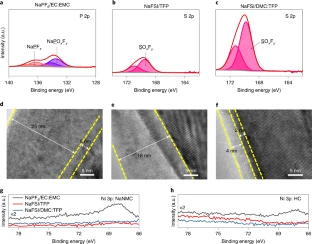Science Daily July 13, 2022
The severe instability of the solid–electrolyte interphase (SEI) formed during repeated cycling in sodium ion batteries (NIBs) hinders their development. In particular, the SEI dissolution in NIBs with a high-voltage cathode is more severe than in the case of Li-ion batteries (LIBs) and leads to continuous side reactions, electrolyte depletion and irreversible capacity loss, making NIBs less stable than LIBs. A team of researchers in the US (Pacific Northwest National Laboratory, University of Washington) developed a
rational electrolyte design to suppress the SEI dissolution and enhance NIB performance. Their electrolyte lowered the solvation ability for SEI components and facilitated the formation of insoluble SEI components, which minimizes the SEI dissolution. In addition to the stable SEI on a hard carbon (HC) anode, they showed a stable interphase formation on a NaNi0.68Mn0.22Co0.1O2 (NaNMC) cathode. A HC||NaNMC full cell with this electrolyte demonstrated >90% capacity retention after 300 cycles when charged to 4.2 V. According to the researchers their study enables high-voltage NIBs with long cycling performance and provides a guiding principle in electrolyte design for sodium-ion batteries…read more. TECHNICAL ARTICLE

CEI components and structures of the cycled NaNMC cathodes. Credit: Nature Energy (2022)